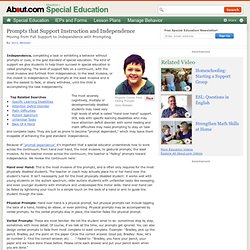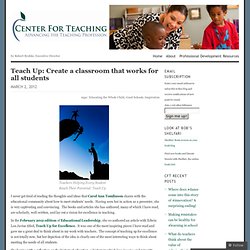

Lehrerfeedback und Schülerfeedback nach Hattie. Feedback befindet sich laut Hattie unter den Top 10 der Einflussfaktoren für den schulischen Lernerfolg.

Feedback bringt etwas und es bringt viel. Allerdings zeigt sich in den untersuchten Studien zu „Visible Learning – Lernen sichtbar machen“ auch eine große Streuung: manches Feedback wirkt besonders stark, anderes Feedback bringt weniger. Wie sieht gutes Feedback aus? Feedback wirkt in beide Richtungen Laut Hattie wird Feedback in der Schule üblicherweise als etwas angesehen, das Lehrpersonen ihren Schülerinnen und Schülern geben. Wenn Lehrer danach fragen, oder zumindest offen sind für Feedback von den Schülern über das, was sie wissen, was sie verstehen, wo sie Fehler machen, wann sie etwas missverstehen, wann sie nicht interessiert sind – dann können Lehren und Lernen aufeinander abgestimmt werden und wirkungsvoll sein.
Die Kunst des Feedbacks besteht darin, Feedback geben und empfangen zu können. Lernrelevante Informationen vs. Feed up, feed back, feed forward Was ist das Ziel? Prompts that Support Instruction and Independence. Independence, completing a task or exhibiting a behavior without prompts or cues, is the gold standard of special education.

The kind of support we give students to help them succeed in special education is called prompting. The level of support falls on a continuum, with the most invasive and furthest from independence, to the least invasive, or the closest to independence. The prompts at the least invasive end is also the easiest to fade, or slowly withdraw, until the child is accomplishing the task independently. The most severely cognitively, multiply or developmentally disabled students may need very high levels of what is called “hand over hand” support. Still, kids with specific learning disabilities who may have attention deficit disorder with some reading and math difficulties may need prompting to stay on task and complete tasks.
Hand over Hand: This is the most invasive of the prompts, and is often only required for the most physically disabled students. Teach Up: Create a classroom that works for all students. Teachers Helping Every Student Reach Their Potential: Teach Up I never get tired of reading the thoughts and ideas that Carol Ann Tomlinson shares with the educational community about how to meet students’ needs.

Having seen her in action as a presenter, she is very captivating and convincing. The books and articles she has authored, many of which I have read, are scholarly, well-written, and lay out a vision for excellence in teaching. In the February 2012 edition of Educational Leadership, she co-authored an article with Edwin Lou Javius titled, Teach Up for Excellence. It was one of the most inspiring pieces I have read and gave me a great deal to think about in my work with teachers. She begins with a reflection on the history of education, a history in which low-income and minority students were educated in learning environments far less enriching than those of their more privileged counterparts.
So what is their model? Principle #1 Principle #2 Principle #3 Principle #4 Principle #5. How to Differentiate Instruction:Reconcilable Differences? Standards-Based Teaching and Differentiation. Heterogeneous Instruction Mini-site. A) Day schools are increasingly drawing a varied population in terms of socioeconomic background, cultural background, and academic ability.

B) Most day schools do not have large enough populations or sufficient resources to create effective homogeneous groupings. Many lack the resources to provide adequate support services for gifted and learning disabled students. C) Multi-ability programs are beneficial for heterogeneous populations. Yet, because of the double curriculum, day school programs tend to be academically based with a strong emphasis on verbal and math skills. Programs in physical education and the arts are less intense than those in the public schools and are greatly reduced on the high school level. Methodologies for the Heterogeneous Classroom A. B. Linguistic Intelligence Mathematical-Logical Intelligence Spatial Intelligence Musical Intelligence Bodily-Kinesthetic Intelligence Interpersonal Intelligence C. 1) challenging 2) open-ended 3) multi-ability based 1. 2.